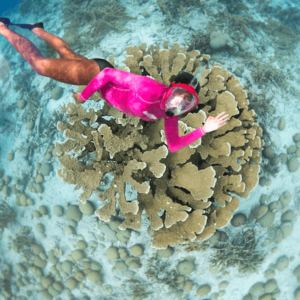Are you ready to immerse yourself in the enchanting beauty of the underwater world? If so, snorkeling may be the perfect adventure for you! With its ease and accessibility, snorkeling allows you to discover the vibrant marine life and stunning coral formations that lie just beneath the surface. Whether you’re an experienced snorkeler or a beginner, this article will guide you through the best ways to make the most of your snorkeling experience and create lasting memories in the depths of the ocean. So grab your mask and snorkel, and let’s dive into a world brimming with wonder and awe! Snorkeling is an exciting and accessible way to explore the captivating underwater world. Whether you’re a beginner or a seasoned snorkeler, choosing the right gear is essential for a comfortable and enjoyable experience. In this comprehensive article, we will guide you through the process of selecting the perfect snorkeling gear, preparing for your adventure, mastering snorkeling techniques, ensuring safety, conserving the environment, exploring top snorkeling destinations, capturing amazing photos, and discovering the best snorkeling tours and excursions. So get ready to dive in and embark on an unforgettable snorkeling journey!
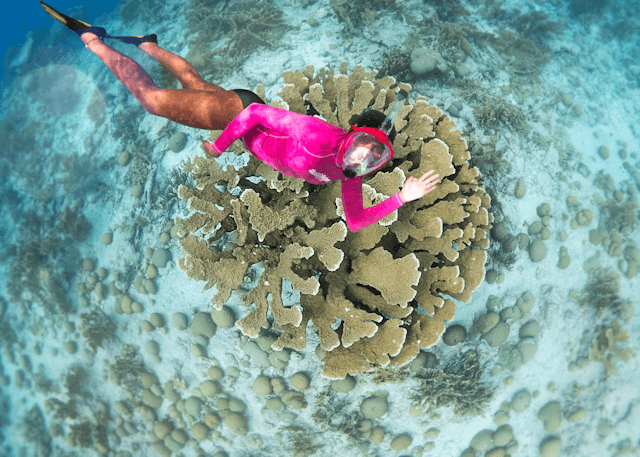
Choosing the Right Snorkeling Gear
Selecting the Right Mask
The first step in choosing the right snorkeling gear is finding a mask that fits you perfectly. A mask with a good fit is crucial to prevent leaks and ensure clear vision underwater. Look for a mask that covers your nose and forms a tight seal around your face. It should provide a comfortable fit without feeling too tight or loose. Opt for a mask with a wide field of vision to enhance your underwater exploration.
Finding the Perfect Snorkel
Finding the perfect snorkel is essential for effortless breathing while snorkeling. Look for a snorkel with a comfortable mouthpiece that fits securely in your mouth. Consider a snorkel with a purge valve, which allows you to easily clear any water that enters the tube. A snorkel with a splash guard or a dry top is also recommended to prevent water from entering the snorkel when you dive underwater.
Choosing the Right Fins
Fins are an important component of your snorkeling gear as they provide propulsion and help you move through the water with ease. Select fins that are the right size for your feet and provide a snug yet comfortable fit. Look for fins with an open heel design, which allows for adjustment and accommodates different foot sizes. Opt for fins made from durable materials like rubber or neoprene to ensure longevity.
Consider a Snorkel Vest for Safety
If you’re a beginner or not a strong swimmer, wearing a snorkel vest can provide an extra layer of safety and peace of mind. A snorkel vest is a buoyancy aid that can be inflated or deflated to adjust your buoyancy in the water. It can help you stay afloat and conserve energy, allowing you to focus on enjoying the underwater experience without worrying about staying afloat.
Ideal Snorkeling Apparel
Choosing the right snorkeling apparel can enhance your comfort and enjoyment while snorkeling. Opt for a lightweight and quick-drying wetsuit or rash guard to protect your skin from the sun and potential stings from jellyfish or other marine creatures. Consider wearing a snorkeling hood or gloves for added warmth in colder waters. It’s also important to wear a snorkeling vest or a brightly colored rash guard to make yourself more visible in the water, especially in crowded areas.
Preparing for Your Snorkeling Adventure
Researching Snorkeling Spots
Before embarking on your snorkeling adventure, spend some time researching snorkeling spots in your desired destination. Look for spots known for their clear waters, abundant marine life, and interesting underwater features such as coral reefs or marine sanctuaries. Read reviews and gather information about the best times to visit, water conditions, and any specific rules or regulations that may apply.
Checking Weather and Water Conditions
Checking the weather and water conditions is crucial for a safe and enjoyable snorkeling experience. Keep an eye on the local weather forecast and avoid snorkeling during storms, strong winds, or rough seas. Check for any warnings or advisories related to water conditions such as high surf, strong currents, or dangerous marine life. Plan your snorkeling adventure on days with calm weather and favorable water conditions.
Understanding Local Regulations
It’s important to familiarize yourself with the local regulations and guidelines relevant to snorkeling in your chosen destination. Some areas may have protected marine parks or restricted zones where snorkeling is not allowed. Familiarize yourself with any specific rules regarding snorkeling equipment, feeding marine life, or touching coral reefs. By respecting the local regulations, you contribute to the preservation of marine ecosystems and ensure a sustainable snorkeling experience.
Informing Others about Your Plans
Before heading out for a snorkeling adventure, make sure to inform someone you trust about your snorkeling plans. Share details such as the location, estimated duration, and any specific landmarks nearby. Provide them with emergency contact information and let them know when you expect to return. This simple step can provide an extra layer of safety and ensure that someone knows where you are in case of an emergency.
Ensuring Physical Fitness
Snorkeling requires a moderate level of physical fitness, as it involves swimming and being in the water for extended periods. Ensure that you are in good health and physically capable of undertaking a snorkeling adventure. If you have any pre-existing medical conditions, consult with your healthcare provider to ensure that snorkeling is safe for you. Maintain a reasonable level of cardiovascular endurance and make sure you have the necessary strength and stamina to enjoy your snorkeling expedition to the fullest.
Explore Uncharted Hawaiian Destinations
Mastering Snorkeling Techniques
Breathing Techniques
Breathing properly is key to a comfortable and enjoyable snorkeling experience. Practice breathing through your mouth using the snorkel by taking slow, deep breaths. Avoid breathing through your nose, as this can cause water to enter the snorkel. Remember to exhale fully before taking your next breath to clear any residual carbon dioxide from your lungs.
Clearing Your Mask
Sometimes water may enter your mask, causing visibility issues. Knowing how to clear your mask is an essential skill for any snorkeler. To clear your mask, tilt your head back slightly, press the upper part of the mask against your forehead, and exhale forcefully through your nose. This will create enough pressure to push the water out of the mask without having to remove it.
Equalizing Ear Pressure
Equalizing the pressure in your ears is necessary when diving underwater, especially for deep snorkeling or freediving. To equalize, pinch your nose with your fingers and gently blow through your nose while keeping your mouth closed. This action will help equalize the pressure in your ears and prevent discomfort or potential damage.
Kicking Techniques
Mastering efficient kicking techniques can improve your mobility and conserve energy while snorkeling. Use a flutter kick or a modified frog kick, keeping your legs relaxed and using your hips to generate propulsion. Avoid using a scissor kick, as it may disturb underwater life or damage delicate coral reefs.
Navigating with a Snorkel
Navigating with a snorkel requires good spatial awareness and the ability to observe your surroundings while keeping your face in the water. Practice using your peripheral vision to maintain awareness of your surroundings and prevent collisions with other snorkelers, boats, or underwater obstacles. Remember to lift your head periodically to check your direction and position.
Safety Tips for Snorkeling
Buddy System
Snorkeling with a buddy is highly recommended for safety reasons. Having a buddy allows you to watch out for each other, provide assistance if needed, and share the excitement of underwater discoveries. Before entering the water, establish clear communication signals with your buddy to ensure effective communication while snorkeling.
Monitoring Your Air Supply
Monitoring your air supply is crucial to prevent running out of breath while snorkeling. Keep track of how much air you have left in your tank or your lung capacity if freediving. Ascend to the surface to breathe fresh air when you feel you need to replenish your oxygen supply. Avoid hyperventilating, as it can lead to shallow water blackout and other risks.
Being Aware of Potential Hazards
Being aware of potential hazards is essential for snorkeling safety. Watch out for strong currents, sudden changes in weather, submerged rocks or reefs, and boat traffic. Familiarize yourself with the marine life in the area and avoid touching or disturbing any marine creatures. Be cautious of your surroundings and always prioritize your safety.
Dealing with Jellyfish or Stingrays
Encountering jellyfish or stingrays can be a concern while snorkeling. If you spot a jellyfish, give it a wide berth and avoid contact. If stung, notify a lifeguard or seek medical attention as soon as possible. In the case of stingrays, shuffle your feet along the seafloor to alert them of your presence and avoid stepping on them accidentally. Give them space and observe from a safe distance.
Understanding Marine Life Safety
Respecting and understanding marine life is crucial for both your safety and the preservation of the underwater ecosystem. Avoid touching or provoking marine creatures, as this can lead to injury or harm to both you and the animal. Follow responsible snorkeling practices, such as maintaining a safe distance from wildlife and not feeding them.
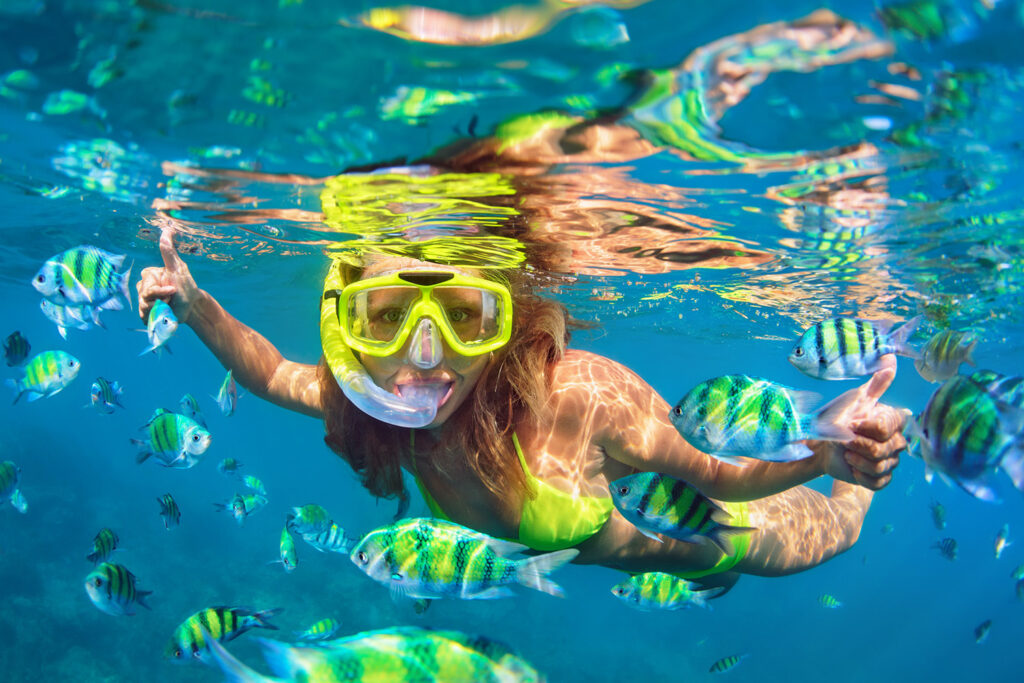
Plan Your Dream Hawaiian Getaway
Conserving & Protecting the Underwater World
Minimizing Contact with Coral
Coral reefs are fragile and sensitive ecosystems that require protection. Avoid touching or standing on coral reefs, as even a slight touch can cause irreparable damage to the delicate organisms. Maintain good buoyancy control to prevent accidental contact and practice proper fin-kick techniques to avoid stirring up sediment and harming the coral.
Avoiding Disturbing Marine Life
Respecting the natural behavior of marine life is essential for their well-being and your safety. Refrain from chasing or harassing marine creatures, as this can cause stress and disrupt their natural behavior. Keep a safe distance and observe without interfering or touching any marine life.
Responsible Snorkeling Practices
Practicing responsible snorkeling involves minimizing your impact on the underwater environment. Avoid littering or leaving any trash behind, and dispose of your snorkeling waste properly. Refrain from taking souvenirs such as shells or coral fragments, as removing them can disturb the delicate balance of marine ecosystems.
Proper Disposal of Snorkeling Waste
Dispose of your snorkeling waste properly to prevent pollution and protect marine life. Bring a small bag or container to collect any trash or waste items, such as snack wrappers or plastic bottles. Once back on land, find appropriate waste disposal facilities or bins and recycle whenever possible.
Participating in Underwater Cleanups
Consider joining or supporting underwater cleanups in your local area or at popular snorkeling destinations. These events bring together snorkelers, divers, and community members to collect trash underwater and raise awareness about ocean conservation. Participating in underwater cleanups is a great way to give back to the marine environment and ensure its preservation for future generations.
Exploring Snorkeling Destinations
Caribbean Snorkeling Paradises
The Caribbean is renowned for its stunning snorkeling spots. From the crystal-clear waters of the Cayman Islands to the vibrant coral reefs of Bonaire, the Caribbean offers a plethora of snorkeling opportunities for all skill levels. Explore the diverse marine life, swim among colorful fish, and marvel at the captivating beauty of the underwater world in the Caribbean.
Discovering the Great Barrier Reef
The Great Barrier Reef in Australia is a UNESCO World Heritage site and a true snorkeling paradise. With its breathtaking coral formations, abundant marine life, and vibrant colors, the Great Barrier Reef is a must-visit destination for any snorkeling enthusiast. Snorkel alongside tropical fish, encounter sea turtles, and witness the wonders of this natural masterpiece.
Exotic Snorkeling Spots in Indonesia
Indonesia is home to some of the most exotic and diverse snorkeling spots in the world. From the famous Komodo National Park, where you can snorkel with manta rays, to the Gili Islands, known for their vibrant coral gardens and sea turtles, Indonesia offers a myriad of underwater adventures. Immerse yourself in the rich marine biodiversity and explore the wonders of Indonesia’s underwater realm.
Exploring the Maldives
The Maldives is a paradise for snorkeling enthusiasts, boasting crystal-clear waters, stunning coral reefs, and an abundance of marine life. Dive into the turquoise lagoons, swim among colorful fish, and encounter majestic manta rays and reef sharks. The Maldives offers an unparalleled snorkeling experience in a picturesque tropical setting.
Snorkeling Adventures in Hawaii
Hawaii is a dream destination for snorkelers, with its warm waters, abundant marine life, and spectacular vistas. Explore the famous Molokini Crater, home to diverse marine species, or snorkel along the coast of the Big Island and encounter vibrant coral reefs. Hawaii’s snorkeling adventures offer a unique blend of natural beauty and underwater wonders.
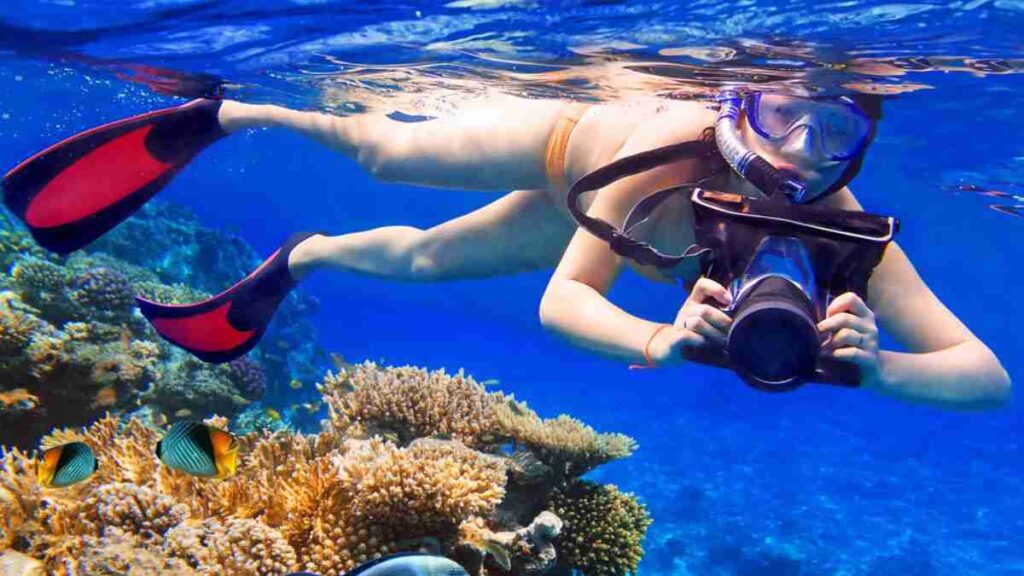
Experience Hawaii’s Unique Attractions
Photography Tips and Equipment for Snorkelers
Choosing the Right Underwater Camera
Capturing your snorkeling memories requires the right underwater camera. Consider a compact, waterproof camera that is easy to use and can withstand the conditions of snorkeling. Look for cameras with good image quality, wide-angle lenses, and image stabilization features. Invest in a sturdy housing or case to protect your camera from water damage.
Understanding Composition and Lighting
Composition and lighting play a significant role in underwater photography. Experiment with different angles, perspectives, and the rule of thirds when framing your shots. Pay attention to the available light underwater and adjust your camera settings accordingly. Natural light can create stunning effects, while adding an external strobe or underwater light can enhance your photos in low-light conditions.
Mastering Underwater Photography Techniques
Underwater photography requires practice and mastering specific techniques. Practice controlling your buoyancy to maintain stability while taking photos. Get close to your subjects without causing disturbance and experiment with different focusing techniques. Shoot in burst mode to capture fast-moving subjects and experiment with different depths to add visual interest to your images.
Preserving Your Snorkeling Memories
Preserving your snorkeling memories is essential to relive the magic of your underwater adventures. Back up your photos and videos regularly to ensure they are safe in case of loss or damage. Create albums or print your favorite shots to showcase your snorkeling journey and share the memories with friends and family.
Sharing Your Snorkeling Photos
Sharing your snorkeling photos can inspire others and raise awareness about the beauty and importance of our oceans. Consider sharing your photos on social media platforms or joining online communities dedicated to underwater photography. Share your experiences, offer tips, and engage with fellow snorkelers to foster a love and respect for the underwater world.
Best Snorkeling Tours and Excursions
Snorkeling with Whale Sharks
Snorkeling with the gentle giants of the sea, whale sharks, is a thrilling and unforgettable experience. Join a guided snorkeling tour in destinations such as Mexico, the Philippines, or the Maldives, where you can snorkel alongside these magnificent creatures. Observe their graceful movements, marvel at their enormous size, and create memories that will last a lifetime.
Swimming with Sea Turtles
Encountering sea turtles in their natural habitat is a magical experience. Join a snorkeling tour in destinations like the Galapagos Islands, Hawaii, or the Seychelles, where you can swim alongside these ancient creatures. Watch as they glide effortlessly through the water, observe their feeding behavior, and admire their timeless beauty.
Exploring Underwater Caves
Embark on a thrilling snorkeling adventure by exploring underwater caves and cenotes. Dive into the mysterious cenotes of Mexico’s Yucatan Peninsula or explore the underwater caves of the Bahamas. Experience the otherworldly beauty of these submerged caverns, marvel at limestone formations, and discover a hidden realm beneath the surface.
Night Snorkeling Adventures
Night snorkeling offers a unique perspective on the underwater world. Join a guided night snorkeling excursion in destinations like the Maldives, Bonaire, or the Red Sea, where you can witness the captivating beauty of nocturnal marine life. Explore the reef under the moonlit sky, spot bioluminescent organisms, and immerse yourself in an enchanting underwater spectacle.
Snorkeling Safari
For the ultimate snorkeling adventure, consider embarking on a snorkeling safari. Join a multi-day liveaboard trip in destinations like the Maldives, the Great Barrier Reef, or the Galapagos Islands, where you can snorkel in different locations and explore a diverse range of marine environments. Dive deeper into the wonders of the underwater world, encounter various species, and create memories that will last a lifetime.
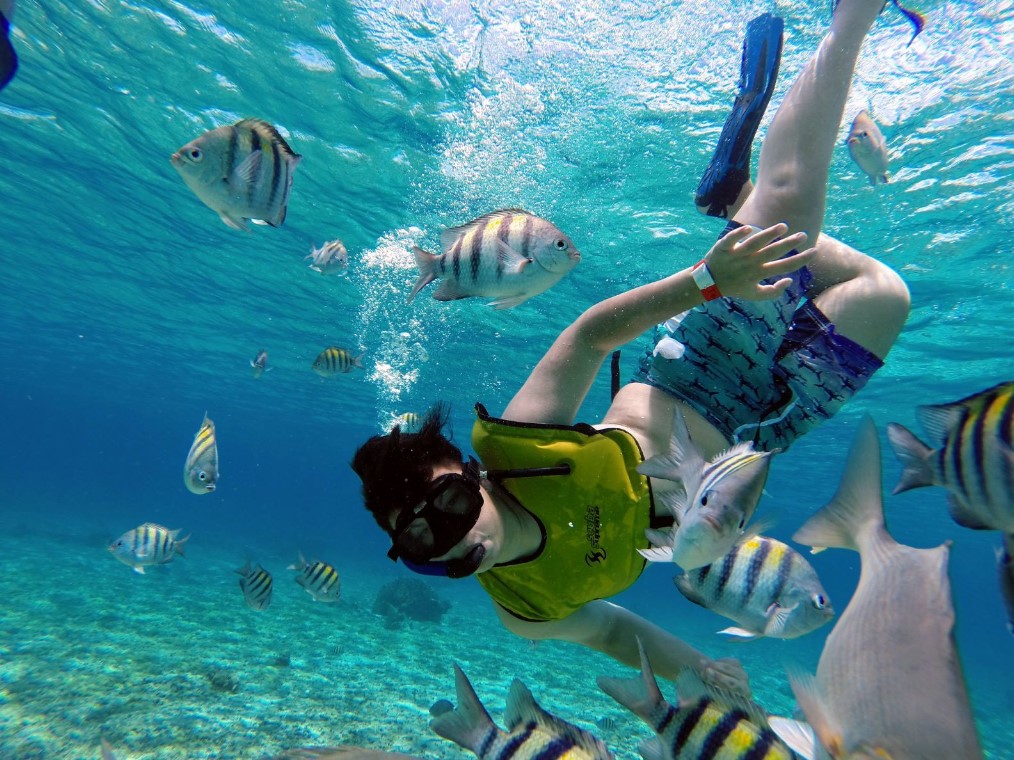
Overcoming Common Snorkeling Challenges
Dealing with Foggy Masks
Foggy masks can be a common annoyance while snorkeling. To prevent fogging, apply an anti-fog solution or toothpaste to the inside of your mask before each snorkeling session. Rinse the solution off thoroughly, ensuring that no residue remains. Avoid touching the inside of your mask with your fingers, as this can transfer oils and contribute to fogging.
Handling Water Leakage
Water leakage in the mask or snorkel can disrupt your snorkeling experience. Ensure a proper fit of your mask by performing a seal test before entering the water. If you experience water leakage, adjust the straps or try a different mask. For a snorkel, check for any cracks, clear any debris, and ensure a tight seal with your mouth to prevent leaks.
Managing Snorkel Mouthpiece Discomfort
A poorly fitting or uncomfortable snorkel mouthpiece can cause discomfort and jaw fatigue. Choose a snorkel with a soft and comfortable mouthpiece that fits securely in your mouth. Consider using a mouth guard or dental silicone to alleviate pressure on your jaw and enhance comfort. Practice relaxing your jaw and jaw muscles while snorkeling to minimize discomfort.
Addressing Claustrophobia
Snorkeling can be intimidating for individuals with claustrophobia. Start by snorkeling in shallow, calm waters to build your confidence gradually. Practice breathing techniques and focus on the beauty of the underwater world to distract your mind from feelings of claustrophobia. Snorkel in the company of a buddy or a guide who can provide reassurance and support.
Solving Equipment Issues
Equipment issues can arise unexpectedly, but it’s important to address them promptly to ensure a pleasant snorkeling experience. Pack spare parts like mask straps, fin straps, or snorkel mouthpieces in case of emergencies. Familiarize yourself with the basic maintenance and repair techniques of your gear. If you encounter equipment problems underwater, signal your buddy or guide and surface safely before addressing the issue.
Tips for Snorkeling with Children
Choosing Appropriate Snorkeling Locations
When snorkeling with children, choosing appropriate snorkeling locations is crucial. Look for calm, shallow waters with minimal currents and excellent visibility. Opt for areas with a variety of marine life to captivate their interest and provide a memorable experience. Consider child-friendly snorkeling destinations with snorkeling guides or instructors specialized in accommodating young snorkelers.
Ensuring Proper Equipment Fit
Ensuring proper equipment fit is essential for children’s safety and comfort. Select child-sized masks, snorkels, and fins that fit snugly but comfortably. Check for adjustable straps and buckles to accommodate growing children and provide a secure fit. Conduct a seal and fit test before each snorkeling session to ensure a proper seal and minimize water leakage.
Supervision and Safety
When snorkeling with children, supervision and safety should always be the top priority. Accompany and closely monitor your children at all times, ensuring they stay within designated safe areas. Educate them about potential hazards and marine life behavior, and teach them to respect and appreciate the underwater environment. Establish clear communication signals and emergency protocols to ensure effective communication underwater.
Engaging Activities for Kids
Engaging children with fun and educational activities can foster their interest in snorkeling and marine life. Encourage them to identify and learn about different fish species, coral formations, or other marine creatures they encounter. Challenge them to keep a snorkeling journal or draw their favorite underwater discoveries. Engaging activities can enhance their snorkeling experience and create lasting memories.
Instilling Love and Respect for the Ocean
Snorkeling offers a unique opportunity to instill in children a love and respect for the ocean and its inhabitants. Teach them about the importance of conservation, sustainable practices, and the impact of human actions on marine ecosystems. Encourage them to participate in beach cleanups or ocean conservation initiatives. By nurturing a sense of responsibility, you can inspire future generations to protect and preserve the underwater world.
With the right gear, preparation, techniques, and mindset, snorkeling can provide you with endless joys, unforgettable experiences, and a profound connection with the underwater world. So, gather your gear, prepare for your snorkeling adventure, dive into the crystal-clear waters, and immerse yourself in the wonders of the marine realm. Happy snorkeling!
